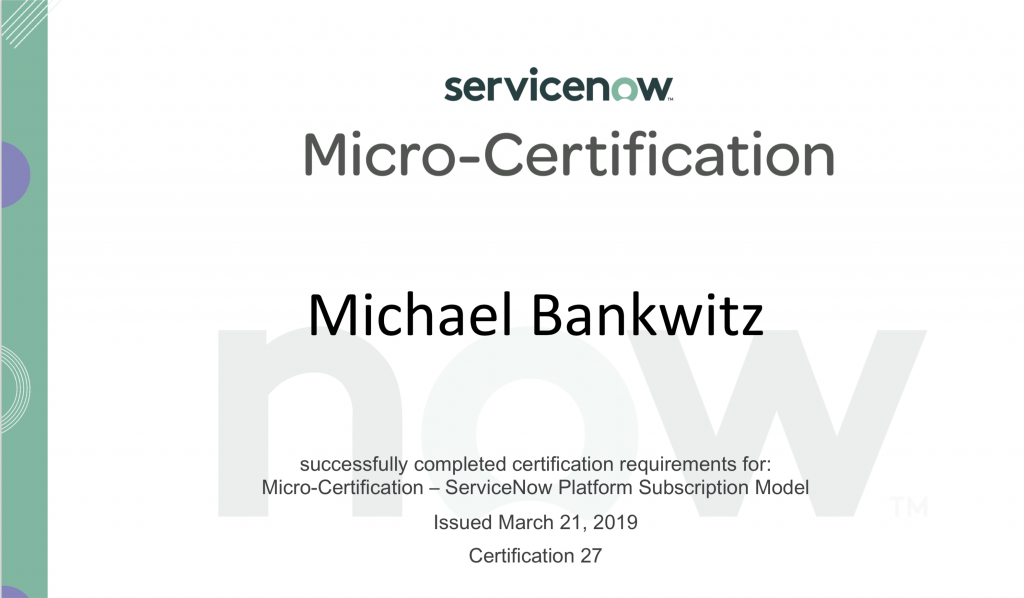Update: Added image of the Micro-Certification – ServiceNow Platform Subscription Model.
As part of the Madrid release, ServiceNow introduces a new licensing model based on custom tables for new customers. I have looked into the training materials (see image) and like to give you my subjective feedback about the license model as an architect, consultant and developer. The article will not explain the license model in detail, therefore the training of the partners and customers will be done by ServiceNow itself.

The old license model
First let’s have a look at the personally experienced situation with the old licensing model. ServiceNow itself, the customer and sometimes an implementation partner are involved usually in questions of licensing. The licensing process results then in the following situations:
- The license agreement is usually negotiated between ServiceNow and the customer. As an implementation partner you are not involved in this process. (@ServiceNow Sales Partner: Excuse this simplification please ;-))
- Usually, the implementation partner has no knowledge of the license agreement. It is up to the customer to ensure that they have the necessary licenses. The implementation partner can only provide limited advices due to missing information.
- There are licenses for certain product suites (e.g., ITSM) and for the ability to develop applications within the platform (often renamed: CreateNow, then Platform Runtime, then Now Platform, ….). Some customers have licensed both types, others only the product suites.
Criticisms of the old licensing model
In my time as an employee of an implementation partner, I often experienced the following problems with the old license model:
- The customer from the business asks the implementation partner for the implementation of specific business requirements. During the definition of the solution design there are questions in regards to the licensing. These questions can not be answered by the customer or by the implementation partner.
- That’s why ServiceNow itself will be involved. Usually, the customer is not able to discuss the technical details of the solution with the ServiceNow contact. That’s why the customer forwards this to the implementation partner. However, the partner has no sufficient knowledge about the license contract between ServiceNow and the customer. In addition, I personally see at this point, the risk of conflicts of interest for the implementation partner.
- Identical licensing questions for different customers with the same licenses can have different results.
Typical example: How to license an extension of the incident table (for example, because the customer IT operates two technically very different incident processes with different access concept)?
New license model
Also, in the new licensing model there are several product suites (e.g., ITSM) and one kind of platform license. In addition, there are finally clear criteria what and how to license and mechanisms to view and control it.
Except for a few well-defined exceptions, every access to a custom table, like the extension of the Incident table, requires a license. Within the ServiceNow instance, the customer can use the application Subscription Management to decide what kind of license is used to access this table. (See: ServiceNow Docs )

This decision can be made within the customer instance and viewed. This is possible for the customer, for the implementation partner and ServiceNow.
Conclusion
Of course, it can be discussed from a technical point of view whether it makes sense to use a table as a unit for licensing. In particular, I see a risk of large denormalized tables being created to reduce the number of licenses required. This can also result in unnecessary increased complexity, errors and poor maintainability. However, there is some responsibility for the customers and their implementation partners to find a meaningful balance between architecture and the number of tables.
Also, I do not know the price implications of the new licensing model (which is the point to negotiate between the customer and ServiceNow). Overall I like the changes to the ServiceNow licensing model, because it’s much more transparent to everyone and there are clear criteria what needs to be licensed and how.